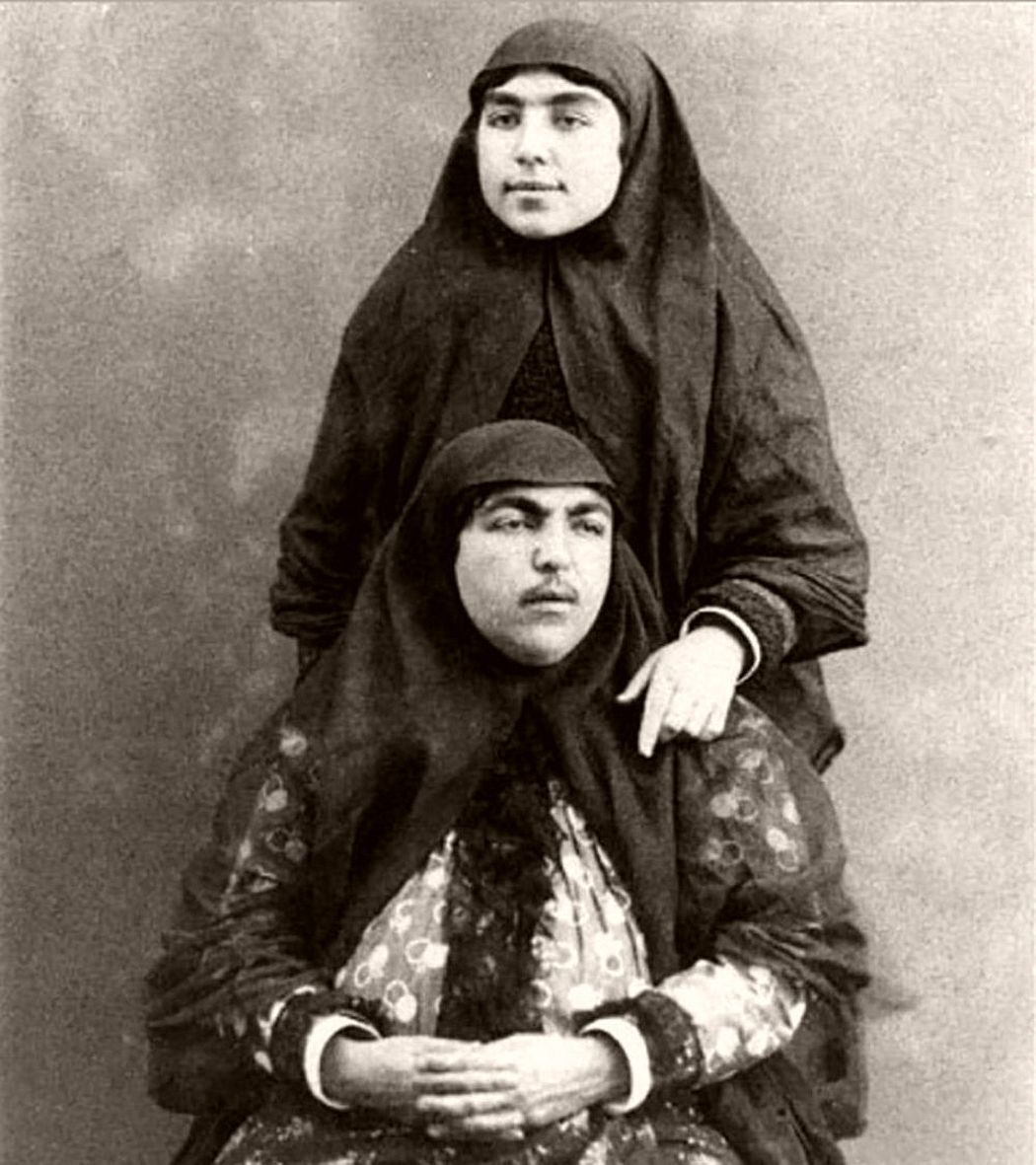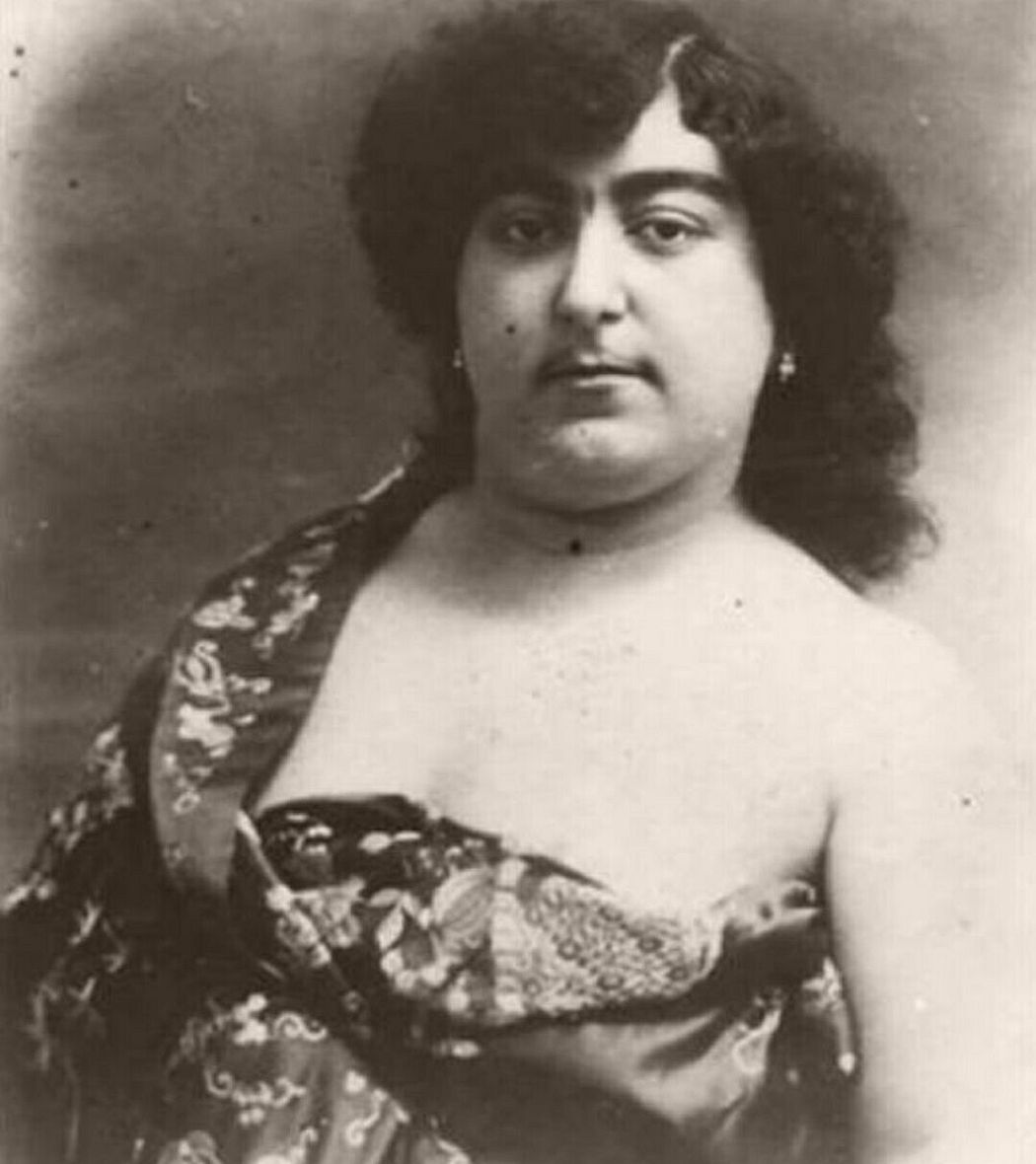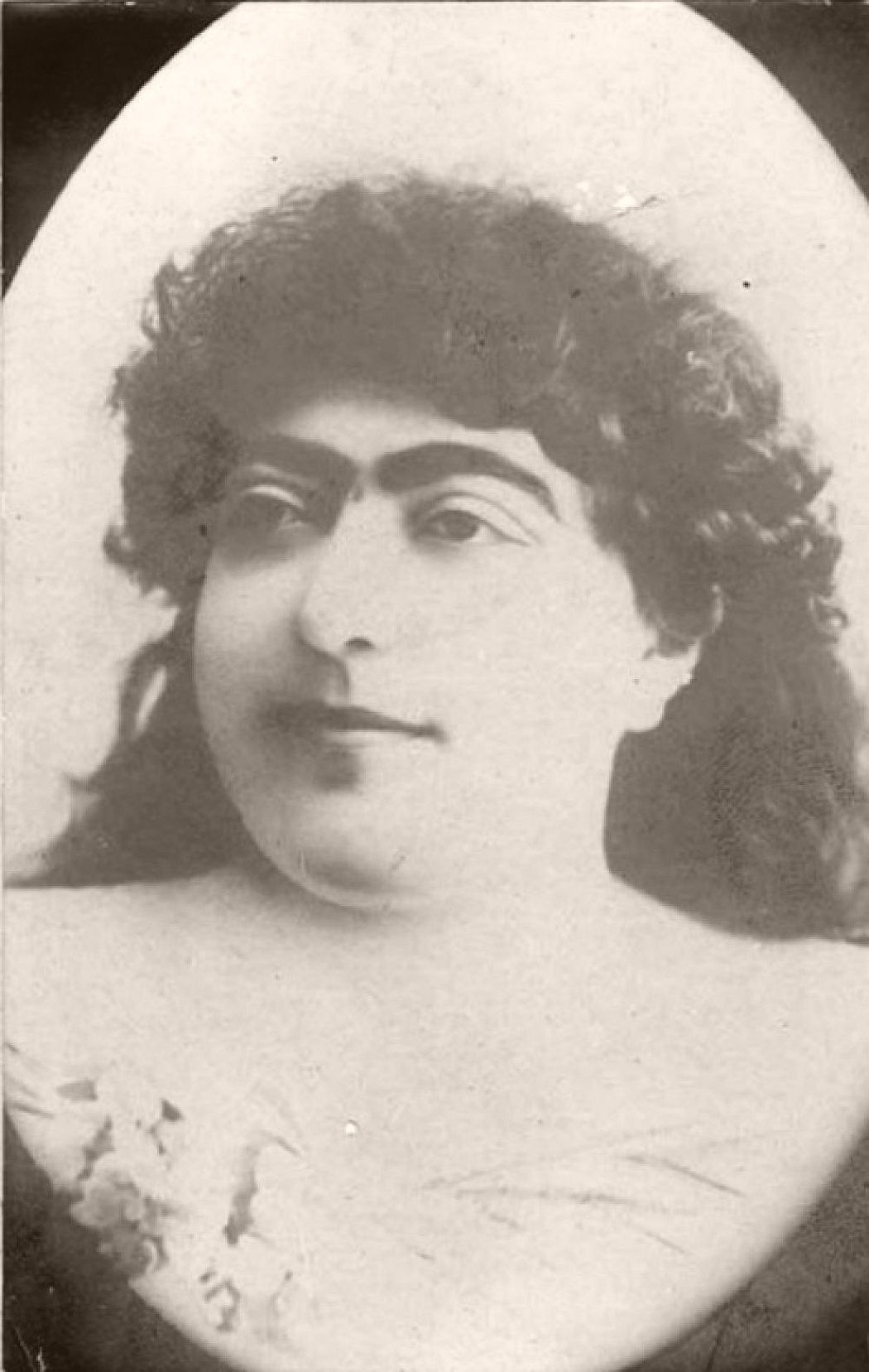Step into the opulent, yet often misunderstood, world of the Qajar dynasty, where a remarkable woman named Zahra Khanom Tadj es-Saltaneh defied societal norms and left an indelible mark on history. More than just a princess, she was a pioneering feminist, a prolific writer, and a fierce advocate for social reform in a time when women's voices were rarely heard. This article aims to peel back the layers of misconception, exploring her extraordinary life, her profound achievements, and crucially, the truth behind the viral meme that unfairly mocks her appearance and legacy.
Her story is one of courage, intellect, and unwavering dedication to progress. Born into privilege, Zahra Khanom Tadj es-Saltaneh chose a path less traveled, using her position not for personal indulgence, but as a platform to champion the rights of women and to articulate a vision for a more equitable society. Join us as we delve into the life of this fascinating historical figure, separating fact from fiction and giving her the recognition she truly deserves.
Table of Contents
- Biography of Zahra Khanom Tadj es-Saltaneh
- Personal Data and Biodata
- Debunking the Viral Meme: The Truth About the Princesses
- A Pioneer of Persian Feminism
- A Literary Trailblazer
- Personal Life and Aspirations
- The Legacy of Zahra Khanom Tadj es-Saltaneh
- Conclusion: A Reclaimed Legacy
Biography of Zahra Khanom Tadj es-Saltaneh
Zahra Khanom Tadj es-Saltaneh (تاجالسلطنه), often referred to simply as Princess Qajar, was a remarkable figure born into the opulent world of the Qajar dynasty. Her life, spanning from the late 19th century into the early 20th century, was a testament to intellectual curiosity and an unyielding commitment to social progress. According to her diaries, she was born in 1883 in Tehran’s Golestan Palace, a place steeped in royal grandeur and political intrigue. As a daughter of Naser al-Din Shah Qajar, the long-reigning Shah of Persia, she was privy to the inner workings of the court, but her interests extended far beyond the confines of royal life. From a young age, it became clear that Zahra was more than just a princess. She was a keen observer of her society, acutely aware of the disparities and injustices, particularly those faced by women. This awareness would fuel her lifelong dedication to advocacy and reform. While many of her contemporaries were content with the traditional roles prescribed for women of their status, Zahra Khanom Tadj es-Saltaneh carved out a unique path, becoming a formidable figure advocating for women's rights and social reform. Her story is not just a chapter in Iranian history but a significant contribution to the global narrative of feminism and intellectual awakening.Personal Data and Biodata
Here is a summary of the key personal data for Zahra Khanom Tadj es-Saltaneh:| Attribute | Detail |
|---|---|
| Full Name | Zahra Khanom Tadj es-Saltaneh (تاجالسلطنه) |
| Also Known As | Princess Qajar |
| Born | 1883 (according to her diaries) |
| Died | 1936 |
| Place of Birth | Golestan Palace, Tehran, Qajar Iran |
| Father | Naser al-Din Shah Qajar |
| Mother | Turandokht Khanom |
| Occupation | Princess, Memoirist, Feminist, Women's Rights Activist, Social Reformer |
| Notable Achievements | Pioneer of Iranian feminism, first Qajar woman to publish work in Europe, advocate for women's rights and social reform. |
| Spouse(s) | Amir Hussein Khan Shoja'al Saltaneh (divorced); later married and divorced multiple times. |
| Children | Had four children with her first husband. |
| Known For | Her diaries (Khatirat-e Taj es-Saltaneh), her advocacy, and being the subject of a viral meme. |
Debunking the Viral Meme: The Truth About the Princesses
One of the most unfortunate aspects of Zahra Khanom Tadj es-Saltaneh's modern-day recognition is her association with a pervasive and misleading internet meme. This meme, which often circulates with captions mocking her appearance or falsely claiming she was considered a beauty icon who drove men to suicide, is not only inaccurate but also deeply disrespectful to her legacy. It's crucial to understand that the memes and fake stories circulating online refer not to a single princess, but actually to two distinct female dynasts from the Qajar era, and the primary subject of ridicule is often misidentified. The confusion stems from the fact that there were multiple Qajar princesses, and photographs from that era can sometimes be mislabeled or misinterpreted. The image most commonly used in these derogatory memes is often attributed to Zahra Khanom Tadj es-Saltaneh, but in many cases, it is actually of her older half-sister, Princess Fatemeh Khanum "Esmat al-Dowleh" (born 1855, died 1905). While both were daughters of Naser al-Din Shah Qajar, their lives and public personas were distinct. The French text provided notes that "La première est née en 1855 et morte en 1905, la seconde est née en 1884 et morte en 1936." This clearly delineates two individuals. Zahra Khanom Tadj es-Saltaneh, the subject of this article, was born in 1883 (or 1884, as some sources suggest, aligning with the "second" princess in the French text), and died in 1936. The notion that her looks would not be considered attractive by contemporary Western standards is often a point of cruel mockery in these memes. However, judging historical figures by modern beauty ideals is inherently flawed and culturally insensitive. Beauty standards are fluid and culturally specific. In the Qajar era, different features were valued. More importantly, reducing a complex historical figure like Zahra Khanom Tadj es-Saltaneh to her physical appearance, especially through the lens of a misleading meme, completely overshadows her monumental achievements and intellectual contributions. Her legacy is defined by her mind, her activism, and her writings, not by a superficial assessment of her looks. It's vital for readers to learn about her life, achievements, and the truth behind the viral meme that mocks her appearance and legacy. By understanding the historical context and the actual identities involved, we can correct the narrative and give Zahra Khanom Tadj es-Saltaneh the respect she deserves as a significant historical figure, rather than a caricature.A Pioneer of Persian Feminism
Zahra Khanom Tadj es-Saltaneh stands as a towering figure in the history of Iranian feminism. She was, as the Italian text states, "più di una principessa, perché è ricordata come la prima femminista persiana nonché scrittrice della dinastia qajar." This recognition is not merely an honorary title; it reflects her active and vocal role in challenging the patriarchal structures of her time. Born into a world where women, even those of royal lineage, had limited autonomy and public voice, she dared to speak out, write, and organize for change. Her unique position within the Qajar court provided her with an unparalleled perspective on the societal issues plaguing Iran. She witnessed firsthand the constraints placed upon women, from education and marriage to social participation. Unlike many who might have accepted their fate, Zahra Khanom Tadj es-Saltaneh felt a profound sense of responsibility to advocate for a better future for Iranian women. Her commitment to women's rights was not abstract; it was deeply personal and rooted in her lived experiences and observations.Advocating for Women's Rights
Zahra Khanom Tadj es-Saltaneh actively championed various aspects of women's rights. She believed fervently in the importance of education for girls, understanding that knowledge was the key to liberation and empowerment. She was a vocal proponent of women's participation in public life, challenging the notion that women belonged solely within the domestic sphere. Her advocacy extended to legal reforms, particularly concerning marriage and divorce, areas where women often had little to no agency. She was not just a theorist; she was an activist. She hosted literary salons and intellectual gatherings in her home, creating spaces where women and men could discuss progressive ideas, including those related to women's emancipation. She was connected with various intellectual and reformist circles of her time, using her influence to support movements for social change. Her efforts laid crucial groundwork for future generations of Iranian feminists, inspiring them to continue the fight for equality. She was indeed a formidable figure advocating for women's rights and social reform.A Literary Trailblazer
Beyond her activism, Zahra Khanom Tadj es-Saltaneh was a prolific writer, distinguishing herself as a memoirist and intellectual. Her literary contributions are arguably her most enduring legacy, providing invaluable insights into the social, political, and cultural landscape of late Qajar Iran, as well as her own deeply personal reflections. She was not just a chronicler of her time but also a critical commentator, unafraid to challenge conventions and express her dissenting views. Her most significant work is her memoir, "Khatirat-e Taj es-Saltaneh" (Memoirs of Taj es-Saltaneh). This extraordinary document offers a rare and intimate glimpse into the life of a royal woman in 19th and early 20th century Iran. Unlike many historical accounts written by men, her diaries provide a female perspective on court life, political events, and the societal pressures faced by women. She wrote with remarkable candor, discussing her marriages, her struggles, her intellectual pursuits, and her evolving feminist consciousness. The memoir is a testament to her sharp intellect and her courage to articulate her thoughts in a society that often silenced women.Memoirs and European Publication
What makes her literary achievements even more remarkable is the fact that she was the first woman from Qajar Iran to publish her work in Europe. This was an unprecedented feat, breaking significant barriers for Iranian women writers. Publishing internationally not only showcased her intellectual prowess to a wider audience but also served as a powerful statement about the capabilities of Iranian women. Her work contributed to a broader international discourse on women's rights and modernity. Her writings are characterized by their introspective nature, critical analysis, and a yearning for progress. She discussed topics ranging from the need for constitutional reform to the importance of modern education and the liberation of women from restrictive traditional norms. Her literary output firmly establishes her as one of the pioneers of Iranian feminism, using the written word as a powerful tool for social change.Personal Life and Aspirations
Zahra Khanom Tadj es-Saltaneh's personal life was as complex and multifaceted as her public persona. Born into royalty, her early life was shaped by the traditions and expectations of the Qajar court. However, she harbored aspirations that often clashed with these conventions, leading to a life marked by both privilege and personal struggle.Early Marriage and Divorce
Like many aristocratic women of her era, Zahra's marital journey began at a very young age. As the Spanish text notes, "A la edad de 10 años fue casada con Amir Hussein Khan Shoja'al Saltaneh, de quien se divorció." This arranged marriage, typical for the time, occurred when she was merely a child. While she bore four children with him, the union ultimately ended in divorce, a relatively uncommon but not unheard-of occurrence for women of her status, especially if they had influential families. Her decision to divorce, and subsequent marriages and divorces, indicate a degree of agency and a refusal to remain in unfulfilling relationships, reflecting her progressive mindset even in her personal life.A Dream of the World
Beyond the confines of her royal duties and personal relationships, Zahra Khanom Tadj es-Saltaneh harbored a profound intellectual curiosity and a desire to experience the world. For Taj, who dreamed of traveling abroad in order to see what her father had seen, there was a better husband waiting on the horizon, one who perhaps could facilitate her intellectual and worldly aspirations. Her father, Naser al-Din Shah, had traveled to Europe multiple times, and his daughter longed to witness the modernity and advancements he described. This desire for travel was not merely for leisure but was deeply connected to her intellectual development and her vision for Iran's future. She sought to understand the world beyond her palace walls, believing that exposure to different cultures and ideas was essential for progress. Her personal life also intertwined with the artistic and intellectual circles of her time. She was the love interest of Yousef Abdu Aref Qazvini, a prominent Persian poet, who wrote his poem "Fe Eh Ya Qajar" about her. This connection highlights her appeal not just as a princess but as an intelligent and inspiring muse for the leading minds of her era. Mimo to, warto o niej wspomnieć, ponieważ była niezwykle interesującą postacią, a jej historia jest równie ciekawa – indeed, her personal story is as compelling as her public achievements.The Legacy of Zahra Khanom Tadj es-Saltaneh
The legacy of Zahra Khanom Tadj es-Saltaneh is multifaceted and continues to resonate today, long after her passing in 1936. She was a Persian princess and memoirist of the Qajar dynasty, but her influence extended far beyond these titles. Her life and work represent a crucial bridge between traditional Persian society and the burgeoning modernist movements of the early 20th century. She embodied the spirit of intellectual awakening and social reform that characterized her era, pushing boundaries and challenging the status quo. Her most significant contribution remains her pioneering role in Iranian feminism. By openly advocating for women's rights, demanding education, and criticizing patriarchal norms, she laid foundational stones for the women's movement in Iran. Her memoirs, in particular, serve as an invaluable primary source for understanding the social history of Qajar Iran from a woman's perspective, a voice that was historically marginalized. They reveal the complexities of royal life, the intellectual ferment of the time, and the deeply personal struggles of a woman seeking self-determination. In an age dominated by male voices, Zahra Khanom Tadj es-Saltaneh asserted her intellectual authority and moral conviction. She was not afraid to critique the very system from which she benefited, demonstrating a rare degree of integrity and foresight. Her courage in publishing her work in Europe further cemented her status as a global intellectual, connecting Iranian thought with broader international currents of feminism and reform. Today, as we navigate the complexities of historical memory and the pervasive nature of online misinformation, it is more important than ever to revisit and correctly understand figures like Zahra Khanom Tadj es-Saltaneh. Her story reminds us that history is often nuanced, and that individuals should be judged by the entirety of their contributions, not by superficial or fabricated narratives. Her true legacy lies in her unwavering commitment to progress, her intellectual bravery, and her enduring inspiration for those who seek to build a more just and equitable world.Conclusion: A Reclaimed Legacy
Zahra Khanom Tadj es-Saltaneh was far more than a princess; she was a beacon of intellectual curiosity, a fearless advocate for women's rights, and a pioneering literary figure. Born into the grandeur of the Qajar dynasty, she leveraged her unique position to champion social reform and challenge the deeply entrenched norms of her time. Her memoirs offer an unparalleled window into the past, revealing a woman of profound thought and conviction who yearned for a more progressive Iran. It is imperative that we reclaim her narrative from the clutches of misinformation. The viral memes that mock her appearance and distort her legacy do a grave disservice to a woman who dedicated her life to enlightenment and equality. By understanding the truth – that these memes often misidentify her and unfairly judge her by anachronistic beauty standards – we can appreciate her for who she truly was: a formidable intellectual, a courageous feminist, and a significant historical figure whose contributions continue to inspire. We encourage you to delve deeper into the rich history of the Qajar era and explore the authentic story of Zahra Khanom Tadj es-Saltaneh. Share this article to help spread awareness and correct the misconceptions surrounding this extraordinary woman. What other historical figures do you believe deserve a similar re-evaluation? Let us know in the comments below!

